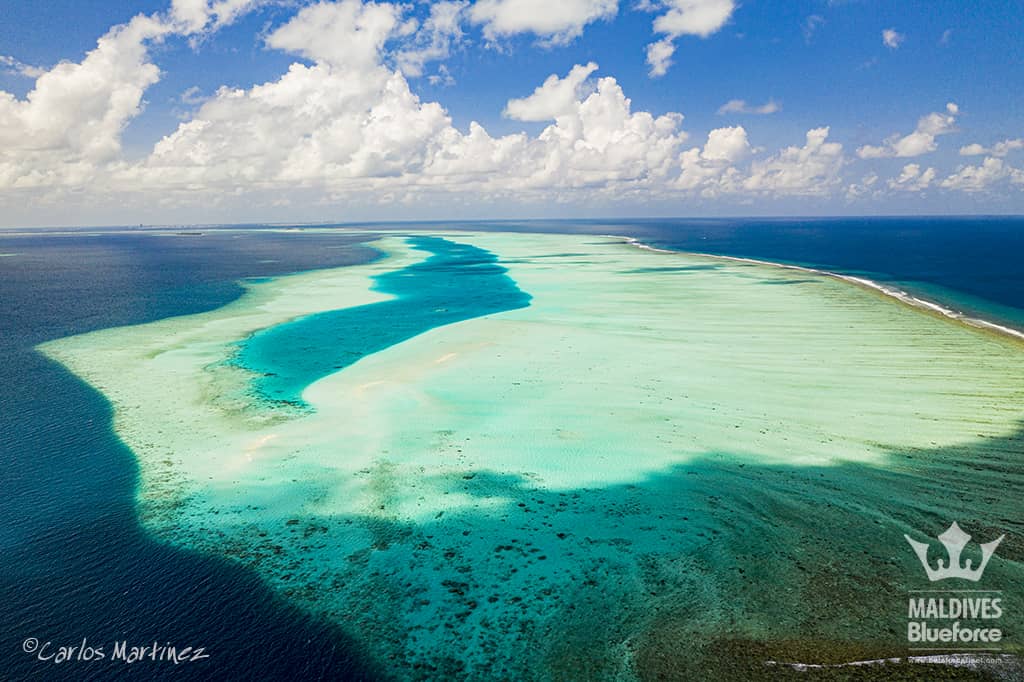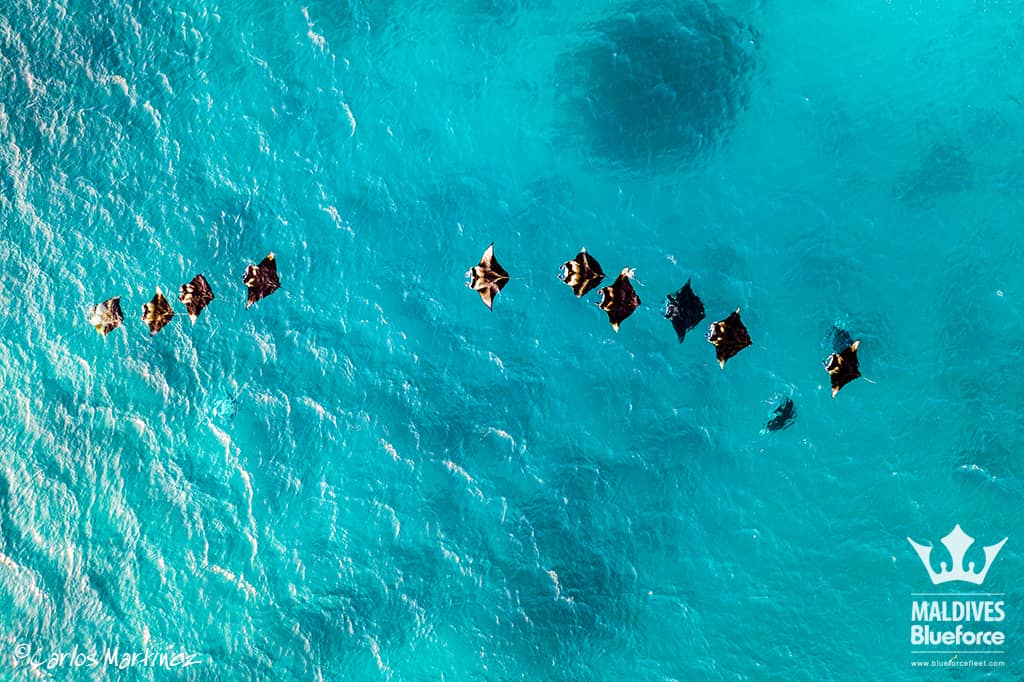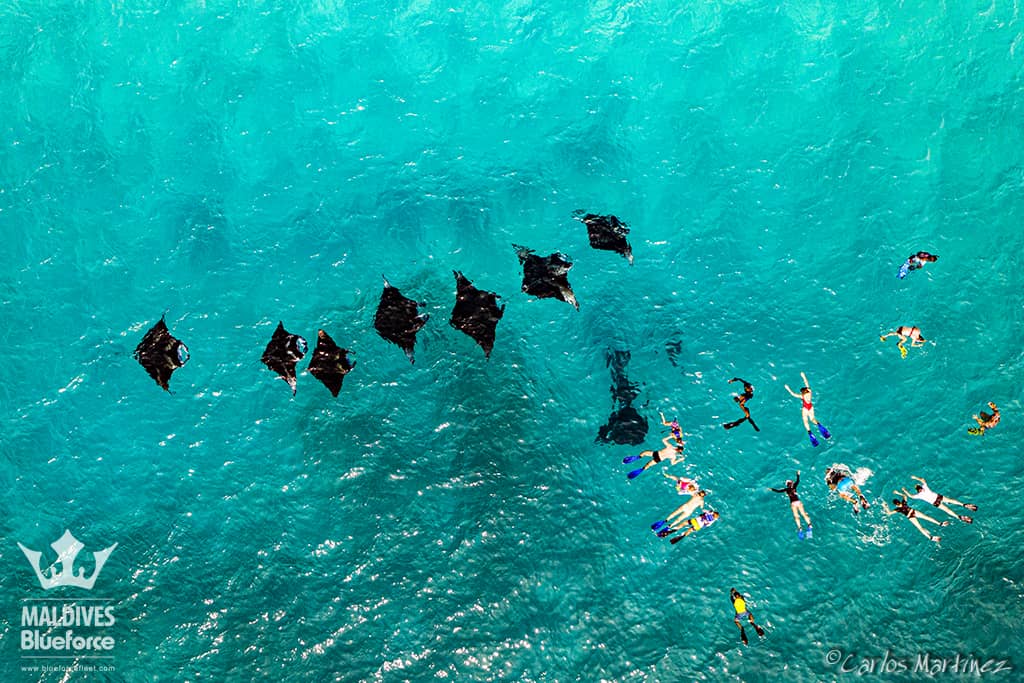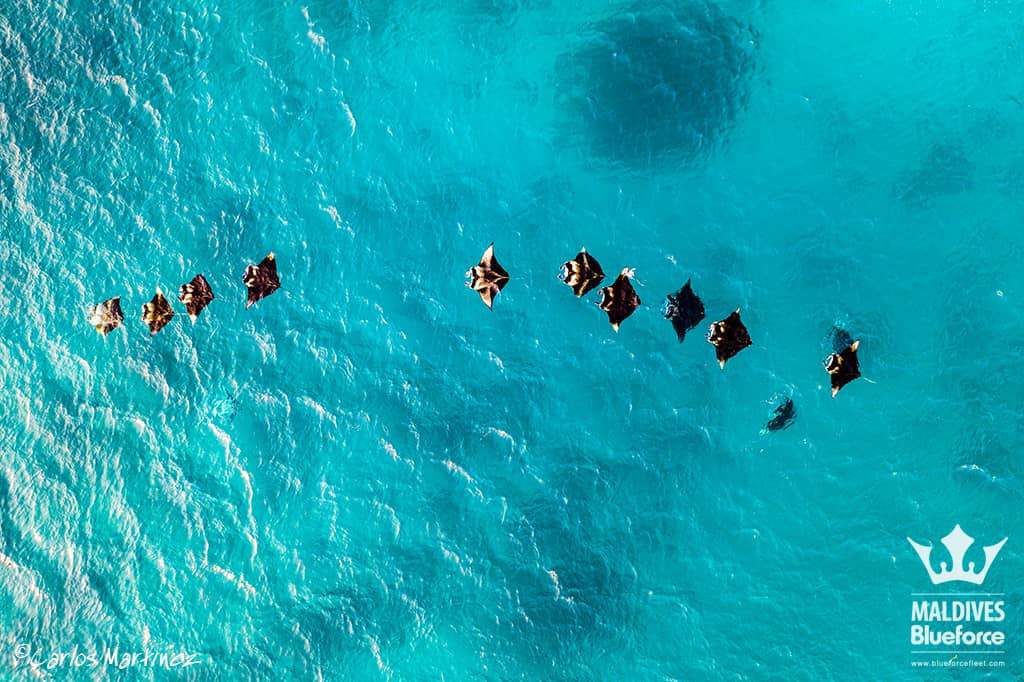Hanifaru Bay
The Manta's Kingdom
One manta ray, two manta rays, three manta rays, … and so and so counting up to six, seven, or eight together in a single dive site is common on a trip to the Maldives. But when the count starts to hit forty or fifty and it’s literally impossible to keep calculating the exact number of manta rays swimming in all directions, you can only be in one place: Hanifaru Bay.
What secret does Hanifaru Bay hide?

Hanifaru Bay, in the Maldives, is a unique place in the world, the shape of the bay and certain ocean currents that converge for a short period of time, favor the concentration of huge amounts of plankton and this allows us to contemplate one of the largest agglomerations of reef manta rays (Mobula alfredi) with an average size of 2-3 m. only surpassed by the giant oceanic manta (Mobula birostris) that can reach more than 5m. of wingspan
Logically, after the discovery of the place by a scientific team, in a few years, Hanifaru Bay became one of the main attractions of the north of Maldives, not only because of the huge amount of mantas that at some times can be observed but also by a growing number of whale sharks that also take advantage of the large amounts of food in the form of plankton found here. To avoid a more than likely overcrowding, in 2011 UNESCO declared Baa Atoll, and especially Hanifaru Bay, a Biosphere Reserve.
Subsequently, the government of the archipelago established strict regulations and supported scientific projects that are still being developed here and in other areas of the Maldives related to this species. Time has shown the success of such measures with the progressive increase in the number of specimens sighted.

Diving in Hanifaru Bay?
Only snorkeling is allowed to swim with these giants in the famous bay. Divers and bubbles would clearly affect the behavior and feeding in a continuous movement of the mantas. Not forgetting that after a few minutes in the water one realizes that scuba diving would not be the best option to enjoy the spectacle that takes place so close to the surface.
From the beginning, the liveaboard cruises do not freely access the area of the atoll where the mantas feed, trying to avoid disturbing the animals and avoid the decrease of specimens in the area, in addition to paying a fee to contribute to the maintenance of the reserve. Visitors, before accessing the water, must attend to the detailed instructions provided by the Manta Trust team and the reserve rangers on how to act at all times, in limited groups, and under the supervision of a certified local guide. Although it may seem somewhat restrictive, shortly thereafter and without any effort, the mantas always end up swimming close, even very close, to anyone who respects their space and their way of eating, either collectively “in a row” or individually performing loopings incessantly.

We are happy to be a “Manta Trust Responsible Tourism Operator” working with the Manta Trust Organization with their program “Swim with Mantas“
How should I behave?
You have to be calm and observe the route that the mantas make uninterruptedly along the canal. The comings and goings are constant, so even in a short time, you can come to recognize some individuals with unmistakable marks such as spots or even bites, some of them healed but others also recent.
Some tips to enjoy the experience:
Do not chase the mantas and let them get used / close
Flashes and video lights are not allowed, but their use would not be useful either.
Always stay close to the surface and enjoy such a wonderful spectacle as one more spectator.

And scuba diving in Baa Atoll?
Although the main restrictions are established for Hanifaru Bay, in the other areas of Baa Atoll diving is allowed. So many congregations of individuals feeding in the bay explain a large number of sightings by divers outside the atoll, not only of mantas but also, with a bit of luck, of whale sharks. In the area there are no great diving spots or those with a special interest, so a day is usually spent in the area to be able to enjoy other atolls.
When and how to travel to Hanifaru?
The “official” season in Hanifaru is from May to November, although the largest congregations of mantas usually occur between the months of July and October. Ideally, choose a route combining the best of the central atolls and a visit to the Baa atoll, further north of the well-known central atolls.
Our recommendation is the Manta Expedition, a route that visits the North Male atolls, visiting the first manta cleaning stations and the famous Fish Factory, Baa Atoll, where we will dive in the Dharavandhoo area, next to the Hanifaru Bay (UNESCO Biosphere Reserve), where we will try to enjoy the mantas while snorkeling, to continue with Rasdhoo Atoll, where pelagic fish await us, Ari Atoll where we will dive with mantas at night and some of the most spectacular thilas, and as a final touch the Vaavu Atoll with its famous and unique dive with the nurse sharks on the island of Alimathaa.
